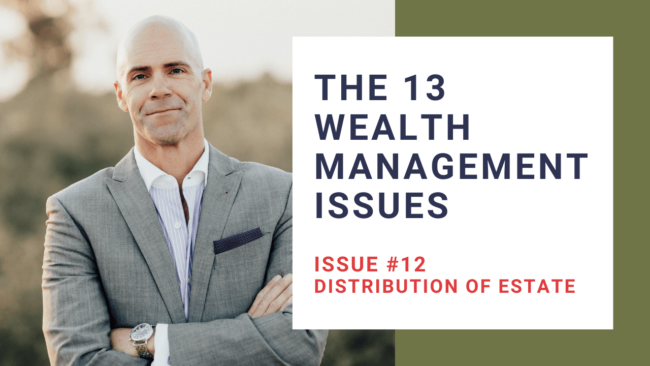
How Do You Handle a Bear? Patience and Diversification
The U.S. stock-market plunge that began in earnest during mid-February has been primarily defined in broad headline-grabbing terms, ignoring underlying details about how different parts of the market have behaved. Sector-specific analysis shows that different segments of the market have been contending with a variety of pressures that extend beyond COVID-19 containment. So, how exactly do you handle a bear? Patience and diversification. We believe it is deeply imprudent to sell now. Market participants who have remained invested and have already borne much of the decline should be in an advantageous position when the rebound arrives.
Swift selloffs have a way of letting fear obscure reality. The U.S. stock-market plunge that began in mid-February has been primarily defined in broad headline-grabbing terms, tying financial-market conditions to the COVID-19 outbreak—and ignoring underlying details about how different parts of the market have behaved.
We can explore this more nuanced story by looking at sector-level performance of the U.S. stock market. While impossible to conclude with any degree of certainty if or how much further stocks will fall, a sector-specific analysis shows that different segments of the market have been contending with a variety of pressures that extend beyond COVID-19 containment.
Defensives Have Fallen By Less
Despite the recent all-encompassing declines, traditionally defensive sectors (consumer staples, telecommunication services and utilities) have held up better, as expected. Health care has also fallen by less than the majority of sectors. Exhibit 1 shows each sector’s decline from its 2020 high price through March 16, as well as the date of its peak.
We can see the health care sector peaked considerably earlier than most other sectors, perhaps due to emerging anxieties about COVID-19. More likely, concerns centered on Senator Bernie Sanders’ since-forfeited polling lead for the Democratic nomination in the 2020 U.S. presidential election and the prospect of the healthcare sector being upended by his “Medicare for All” proposal. Healthcare had huge rallies during the U.S. equity rebounds at the beginning of March following U.S. primary presidential election victories for former U.S. Vice President Joe Biden―signaling reduced expectations that Senator Bernie Sanders will be the Democratic nominee.
Notably, information technology has suffered only a middling decline through March 16 despite being the highest-flying sector in the year-to-date prior to the downturn, which began for the sector on February 19.
The Rest of the Pack Has Fallen By More
Cyclical sectors (consumer discretionary, materials, and industrials) have fallen more sharply than their defensive peers. The materials sector, in particular, has failed to attain a new high since January 2018—in the heart of the last globally synchronized economic expansion, which was ultimately thrown off course amid stiffening U.S. trade policy.
Financials—while not a traditional cyclical sector—have performed quite poorly. The sector’s decline actually began on January 3, so virtually its entire year-to-date performance has been negative. The peak for financials came as U.S. Treasury rates normalized amid rising long-term yields into the end of 2019. Higher interest rates are generally considered advantageous for financial companies, which can increase their net interest margins. Since the New Year, long-term rates have plummeted to historic lows.
The Energy Sector
Investor concerns about the growing economic fallout were compounded by the breakdown of OPEC+ (that is, the Organization of the Petroleum Exporting Countries, or OPEC—led by Saudi Arabia—plus Russia) during the first week of March. The expanded cartel, which succeeded in stabilizing oil prices after their declines from mid-2014 through early 2016, has essentially dictated conditions on the supply side of the market (along with non-aligned U.S. producers) for the last five years. Apparently, Russia did not acquiesce to Saudi Arabia’s plans for a shared production cut intended to stabilize prices in the face of declining demand, so Saudi Arabia responded by increasing production.
While the move may seem counterintuitive—and resulted in the largest one-day oil-price crash since 1991—the goal appeared centered on driving high-cost producers out of commission. Many of these producers are located in the U.S., so the S&P 500 energy sector was hit quite hard. In fact, as a whole, the energy sector never fully recovered from the energy price collapse that began in 2014: the S&P 500 energy sector’s all-time high was attained on June 20, 2014, and it has declined by 71.6% through March 16, 2020.
Our View
We recognize the fear-inducing impact that steep, sustained stock-market selloffs can have on investor temperament. A deeper look at conditions in different corners of the market can help provide a reminder that the headlines often miss the full story. With this in mind, we can see cause for optimism in some areas of the stock market along with a combination of explanations for the volatile conditions in other areas.
There’s no getting around the tough conditions of the past few weeks as performance patterns have been similar outside of the U.S. Exhibit 2 shows emerging-market sector declines, which generally started earlier (besides health care and telecommunication services) as China’s frontline battle against the COVID-19 outbreak had an outsized impact on emerging-market performance.
The divergent performance across sectors both in the U.S. and elsewhere around the globe encapsulates the importance of taking a diversified approach to investing. An investment portfolio concentrated in the worst-performing sectors would have fared much worse than a more broadly allocated alternative.
Looking ahead, there are two ways to respond to this state of affairs: stick to your long-term plan or sell.
We believe it’s deeply imprudent to sell for a couple of reasons. First, it’s entirely possible that stocks are closer to the bottom than the top. If you’ve remained invested up to this point, then you have already borne much of the decline. Second, if you decide to sell, when will you re-invest? If you can’t provide a realistic answer to that question, then it’s probably better to remain patient with your long-term plan in anticipation of the eventual recovery. It’s better to sit tight with the vast majority of your portfolio than to sell at low prices today and buy back in at higher prices later.
Important Information:
There are risks involved with investing, including possible loss of principal. Diversification may not protect against market risk. International investments may involve risk of capital loss from unfavorable fluctuation in currency values, from difference in generally accepted accounting principles or from economic or political instability in other nations. Emerging market involve heightened risks related to the same factors as well as increased volatility and lower trading volume.
Index returns are for illustrative purposes only and do not represent actual investment performance. Index returns do not reflect any management fees, transaction costs or expenses. Indexes are unmanaged and one cannot invest directly in an index. Past performance does not guarantee future results.
This material is provided by SEI Investments Management Corporation (SIMC) for educational purposes only and is not meant to be investment advice. The reader should consult with his/her financial advisor for more information. This material represents an assessment of the market environment at a specific point in time and is not intended to be a forecast of future events, or a guarantee of future results.
This is an article originally published by SEI in the Knowledge Center.
If you’re considering working with us here at Mosaic, we invite you to learn more about who we serve and how we help them. You can also contact us with any questions you have.
Securities and advisory services offered through Cetera Advisors LLC, Member FINRA/SIPC, a broker/dealer and a Registered Investment Advisor. Cetera is under separate ownership from any other named entity.







